The Stone Age is a period of prehistoric time that spans more than 3 millions years, ending with the transition to the Bronze Age at around 3,500-4,000 BC. Homo sapiens (us) lived through the Stone Age along with genetic cousins such as Homo erectus and Homo habilis.
Our ancestors achieved a number of major developments during the Stone Age, key innovations that not only assured our survival in a harsh world, but laid the foundation for the more dramatic innovations that have shaped our world today.
-
Stone or Wooden Club
The Stone Club preceded more sophisticated implements like the Stone Axe and, at its most basic was simply a lump of wood that had weight at one end and a good grasp at the other.
As simple as this is, it gave man a weapon that extended his striking range, even if only for a few feet, allowed him to tackle dangerous animals, and mortal enemies, more confidently. More importantly it exaggerated the users strength by using leverage to impart great force at the striking end of the club.
Where would we be if Stone Age man didn’t have a club to carry around with him? The Flintstones would just not be the same.
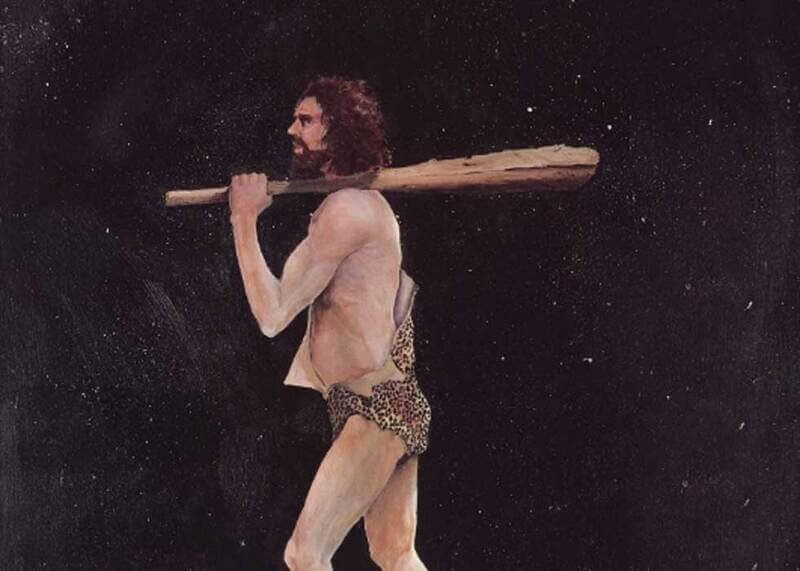
-
Cave Painting / Art
There are many examples of quite intricate Stone Age cave paintings across the globe, depicting people, animals, plants, hunting, the stars, gods or spirits and more.
In some cases these paintings go beyond merely reproducing what happened in the day to day lives of our ancestors and instead took on the role of a story board, a short film or book that told a tale.
It is no stretch to say that these paintings were the art of their time and we can only assume that this art form was more pervasive at the time of its origin than the examples left today.
Art implies thought beyond what was required for practical survival, indeed thinking that had a perspective on time and place.
If you are interested in cave paintings and haven’t seen Cave of Forgotten Dreams by Werner Hertzog, please take a look. It is an extraordinary documentary.
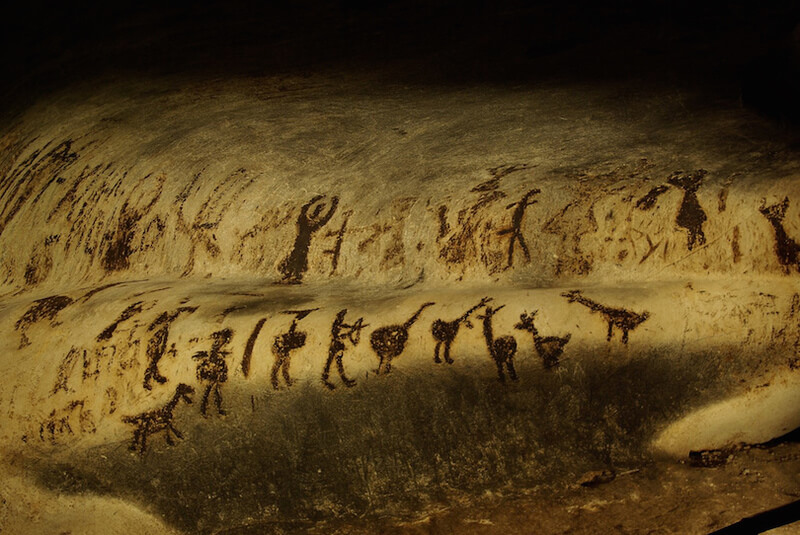
-
Pigment For Body Decoration
Archaeologists have found evidence that Stone Age man used colored pigments for body decoration as long as 400,000 years ago. Although the range of colors they could produce was very limited, typically in the earthy tones associated with ochre and iron oxides in the earth, the fact that Stone Age man decorated himself introduces the concept of status and the ability to think in the abstract.
The ultimate expression of color and status came much more recently when blues and purples, colors that were difficult to create and therefore expensive, became associated with royalty.
Our Stone Age ancestors not only decorated themselves, they also used Ochre and various oxides to create cave paintings that demonstrated a sense of time and place, past and future.

-
Sewing
Flax fibers more than 34,000 years old have been discovered that had been spun to make thread. Our ancestors fashioned needles from animal bones and used the thread to sew animal hide and fur into clothes, shoes and packs and to create string or yarn that had many uses including hefting and being used in making baskets and other domestic pieces.
But what was particularly interesting about these fibers, found in the Republic of Georgia, was their color. Among black and natural fibers were those colored pink and turquoise. Pink and turquoise! So much for Stone Age people walking around in dull variations of beige, here is evidence that they made an effort to introduce color into their lives.
Perhaps even a sense of fashion? Hmmm, probably not.
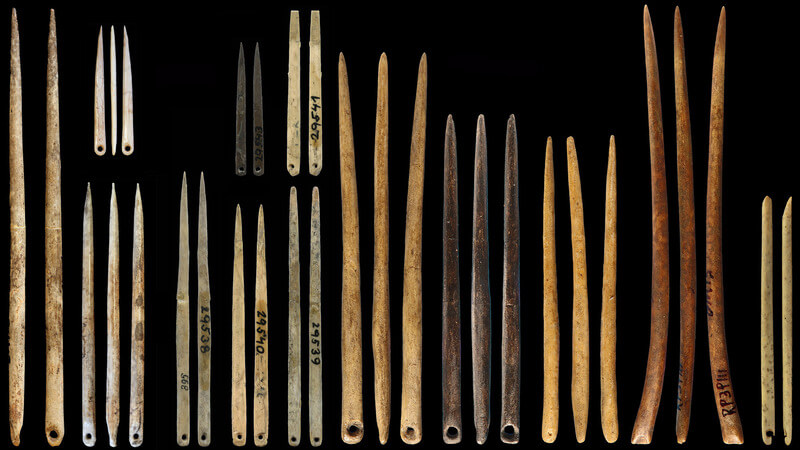
-
Flute / Music
Although whistles that only produced a single note have been found from as long as 100,000 years ago, it was the discovery of a bone flute from 45,000 years ago that had four finger holes in it that gives us real proof that our Stone Age ancestors had incorporated music into their lives.
This flute was broken at either end so the number of holes in the full flute would have been more than four enabling a wide variety of notes to be played.
Interestingly this flute was found in a cave (in Slovenia) that had been occupied by Neanderthals, not Homo sapien. Indeed Neanderthals and Homo sapien were known to have existed in the same areas of ancient Europe together up until the Neanderthals disappeared around 35,000 years ago.
Music. Art. Body decoration. Life was perhaps a bit more colorful for Stone Age man than we might have thought.

-
Bow & Arrow
The bow and arrow was the ultimate Stone Age weapon although they were a relatively late invention, only being in use in parts of the world for the last 30,000 years or so.
These sophisticated instruments required a number of technologies to exist in order to be created. Firstly they needed very strong string or twine, a sharp stone tool to shape the bow and the arrow shaft and the ability to split very sharp, fine stone for the arrow head.
The ability to injure or kill prey or foe from a distance gave our Stone Age man an incredible advantage and, along with the following two inventions, ensured his dominance on the planet Earth.
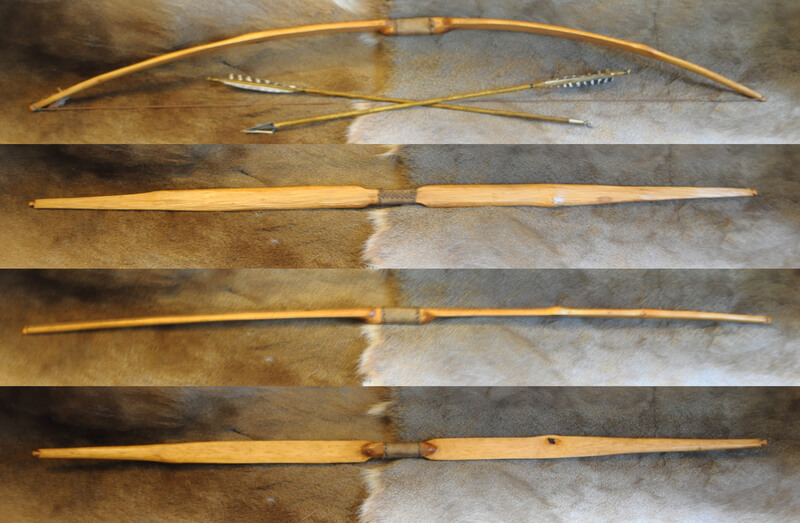
-
Long Hunting Spear
For the purposes of getting food and defending themselves Stone Age man had to contend with numerous creatures that had sharp claws and teeth. Long hunting spears as well as thrusting spears meant they didn’t need to get too close to their prey and had a better chance of injuring or killing the animal while minimizing the potential of their own injury or death.
When long wooden hunting spears were used by a number of people to corner and engage with prey, man became a formidable hunter, increasing their food supply and general safety.
Hunting spears have been found in Europe dating back 400,000 years.
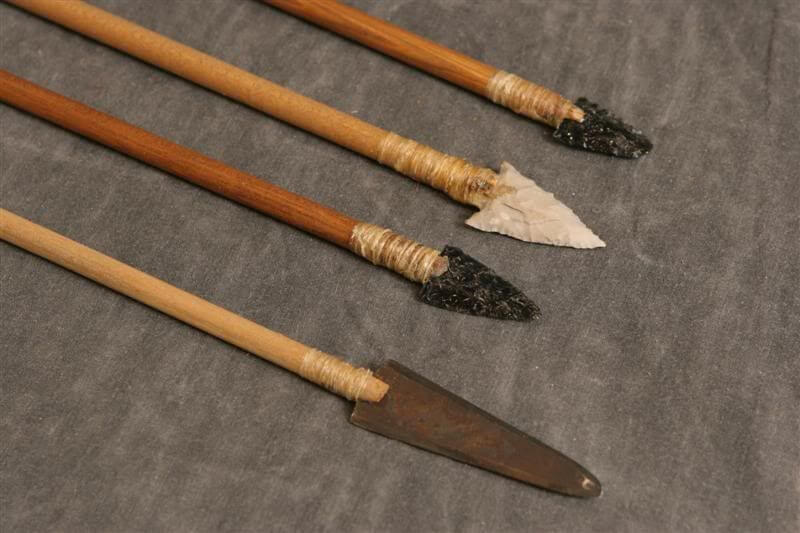
-
Stone Axe
Our Stone Age ancestors made a giant leap when they invented the stone axe somewhere between 250,000 and 1.2 million years ago. Someone at some point intuitively saw the value in attaching a sharp stone to the end of a stick, a process called ‘hafting’, and using leverage to increase power at the axe head.
This was a ground breaking tool that gave the user the ability to kill prey faster and easier than before, fight aggressors (or be a better aggressor), open nuts or seeds for food, chop wood for fire and shape wood in order to build better shelters.
The axe remains a commonly used tool across the globe today making it one of the oldest and most valuable inventions ever.

-
Shelter
Amazingly, the earliest evidence that our ancestors built fixed shelters is from around 2,000,000 years ago. Naturally stone age man sheltered under trees and in caves where possible, but the first evidence of a man-made structure specifically created to provide shelter comes from a site in Central Africa all those years ago.
Some shelters were made of stone and wood, others used the bones and tusks of mammoths to provide the structure and we assume all would have used animal hide and fur to provide a floor and walls.
Other examples of early shelters have been found in Europe and Asia dating back around 500,000 years. These shelters showed evidence of a hearth or fireplace and separate rooms representing a major improvement in living conditions for people using the shelter. Warmth, light, staying dry, cooking, flooring and fur hide bedding. A most luxurious existence.

-
The Controlled Use of Fire
Fire wasn’t discovered as such as it existed before Homo Erectus harnessed its power, however the ability to control fire was the greatest step forward in the history of mankind and our ancestors.
Fire enabled us to cook food meaning we were better nourished, keep warm which meant we were better rested, migrate into colder climates which saw us diversify across the globe, fight away predators, clear forests for agriculture and bake clay to make utensils. It provided a sign of safe haven at night.
Signs of controlled fire have been found at various sites in Africa that are up to 1.8 million years ago. Without learning how to harness and control the power of fire it would be a very different world today.
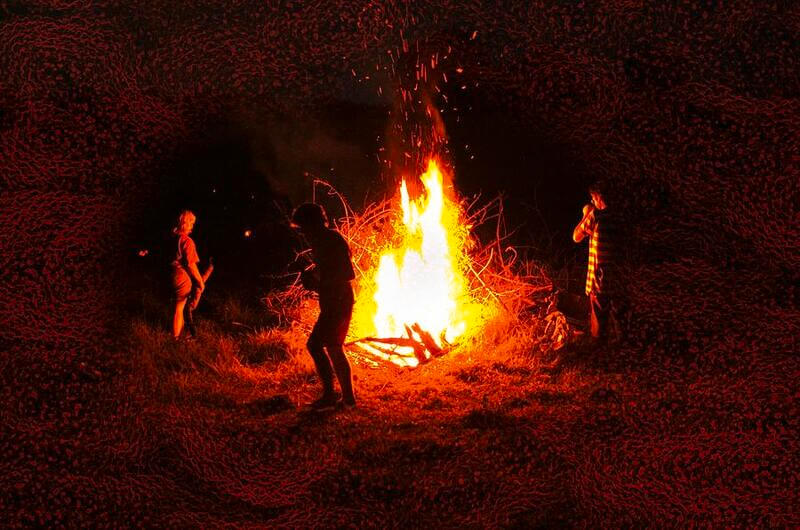
OddSpot
When was the wheel invented? It turns out it was relatively recently. Evidence clearly places the earliest wheels in the Middle East and Central Europe between 3,400 BC and 3,000 BC. In the Bronze Age. Our Stone Age friends did not have the wheel.
Interestingly, homo sapien (mankind) faced extinction as recently as 75,000 years ago when the total population of homo sapien on earth was as low as 600 individuals. Perversely, this low base allowed strong genes to come through and according to some archaeologists, mankind took a ‘great leap forward’ at this time, resulting in our rapid rise to dominance.






